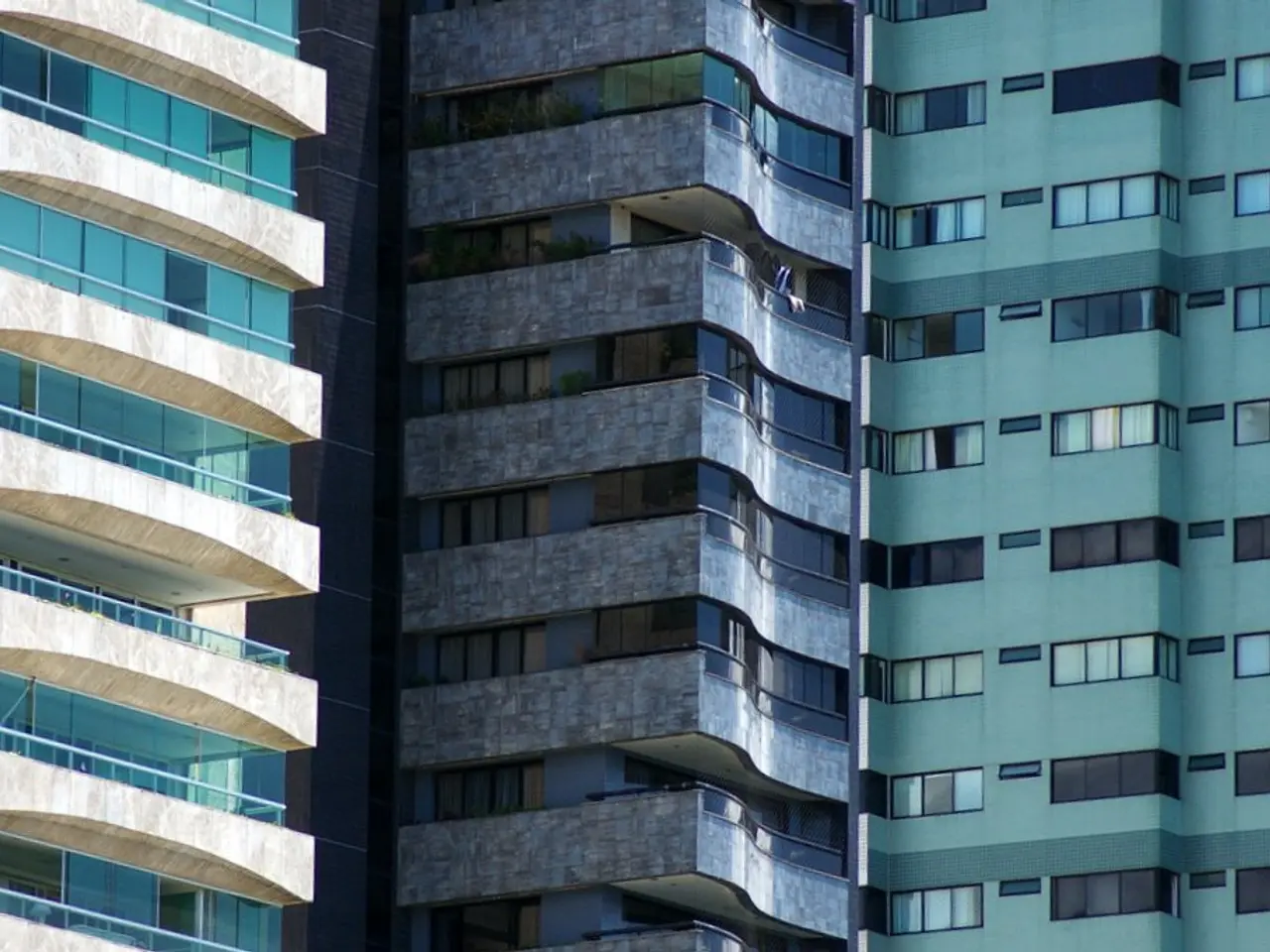The essentiality of concrete: Unveiling the hidden components enclosed within a residential steel framework
In the realm of home construction, steel reinforcement plays a crucial role, particularly in reinforced concrete structures. This unseen hero ensures enhanced tensile strength, improved crack resistance, and increased durability, making buildings safer and more robust.
Key benefits of steel reinforcement include:
- Increased structural strength and load-bearing capacity: Steel reinforcement, such as deformed bars (rebars) or reinforcing mesh, significantly improves the capacity of concrete to resist both compressive and tensile forces, enabling it to withstand heavy loads and stresses.
- Improved crack resistance and ductility: The tensile strength of steel helps control cracks caused by shrinkage, temperature changes, or structural loading, maintaining the integrity and safety of the structure.
- Enhanced durability and resistance: Steel reinforcement is designed to resist corrosion, improving the longevity of concrete structures. TMT (Thermo Mechanically Treated) bars offer fire resistance, seismic shock absorption due to their ductility, and corrosion resistance, making them ideal for various climate conditions including coastal areas.
- Flexibility in design: Steel reinforcement allows for greater architectural freedom, facilitating renovations or modifications more easily than concrete or wood alone.
- Sustainability: Modern reinforcing materials can be made from recyclable steel, contributing to greener building practices.
When it comes to technical standards for steel reinforcement use in Europe, the Eurocode 2 (EN 1992) is the primary guide. This comprehensive set of rules covers specifications for types, grades, and mechanical properties of reinforcing steel, requirements for bond between steel and concrete, rules for detailing, placement, and corrosion protection measures, guidelines for seismic design, and compatibility with reinforcement accessories and sustainable construction practices.
Eurocode 2 harmonizes national standards across European countries, ensuring safe, durable, and high-performance reinforced concrete construction.
In addition to these benefits, steel structures provide the right answers for safety, flexibility, and cost-effectiveness in construction. Prefabricated steel parts significantly speed up the construction process, benefiting homeowners with shorter assembly times, fewer disruptions, and more predictable costs. Modern insulation techniques enable slimmer wall constructions, creating more usable space and being more cost-effective.
Innovation in residential steel construction focuses on efficiency and reducing material consumption without compromising load-bearing capacity. New, lighter, and high-strength steels bear higher loads than conventional variants, helping construction companies save resources and build sustainably.
Steel is essential in home construction to absorb tensile forces such as wind loads, temperature fluctuations, and dynamic loads like earthquakes. With its unparalleled strength, durability, and versatility, steel continues to be a cornerstone of modern construction, setting new standards for safety, sustainability, and architectural freedom.
Read also:
- Two people have passed away, and ten more are hospitalized following blasts at a Pennsylvania steel plant.
- Amidst the influence of industry heavyweights, Thailand's automotive sector strives to regain momentum
- Workers in steel industry frantically enter debris following deadly blast in Pennsylvania, resulting in two casualties.
- Vast automotive manufacturing facility breaks ground in Durban








